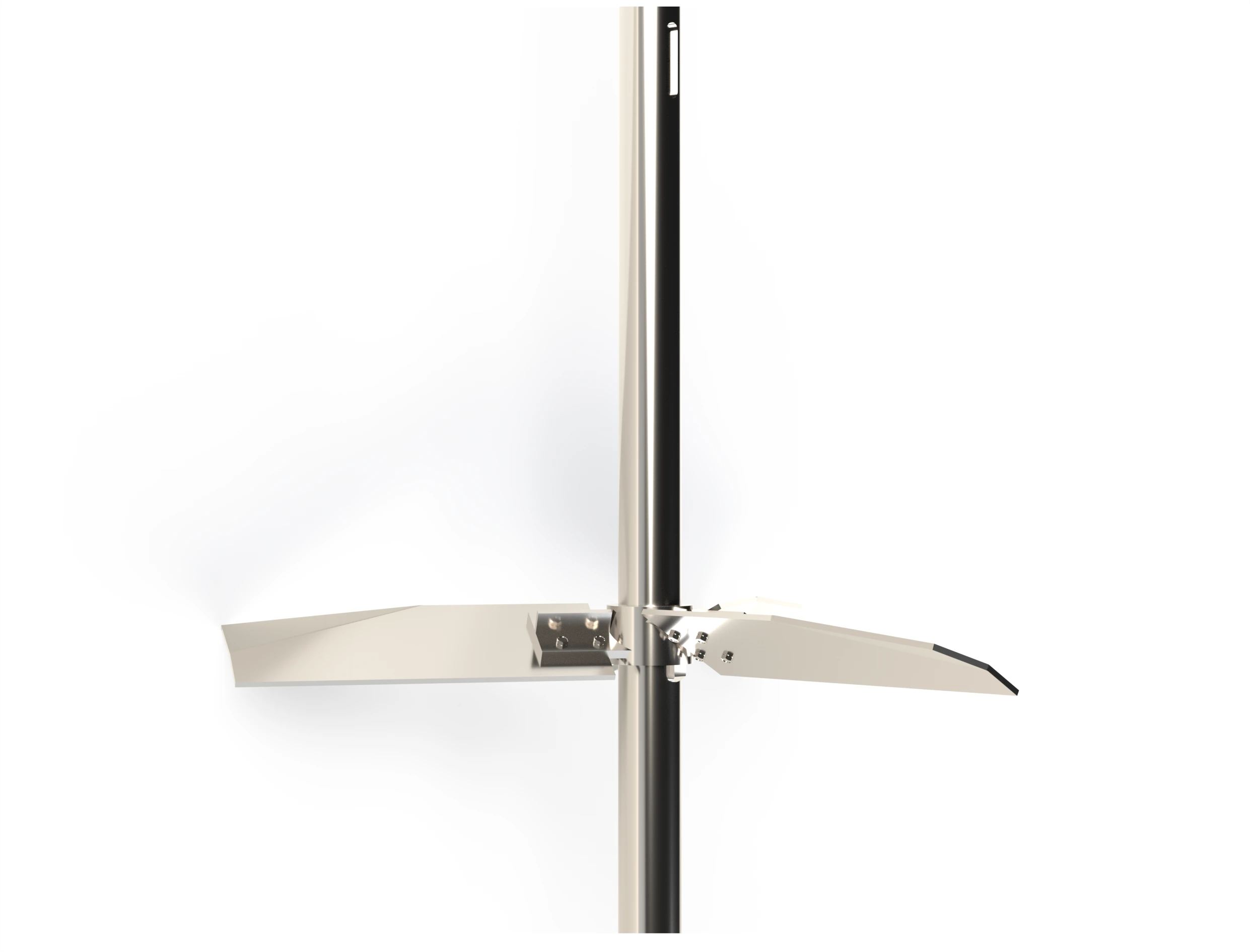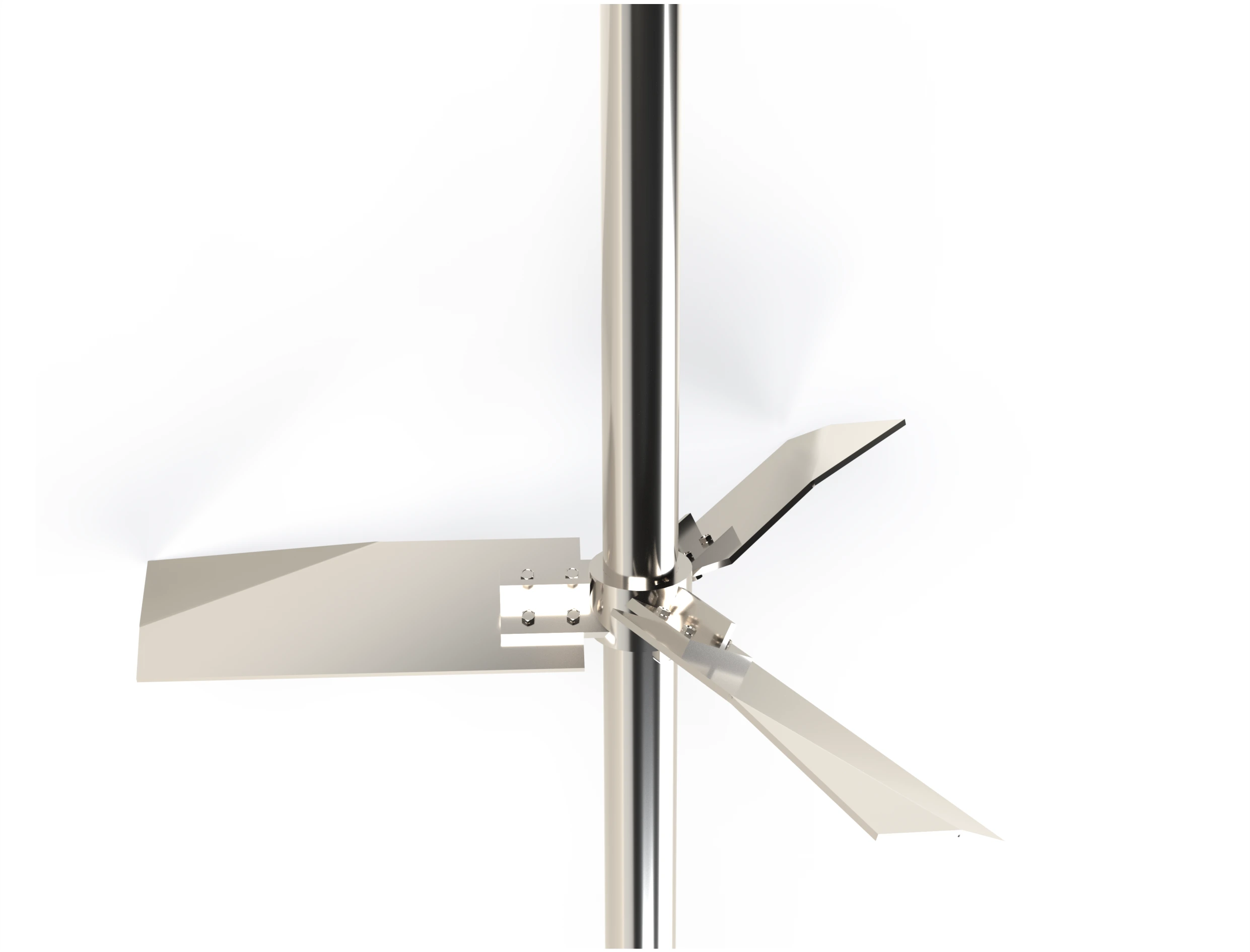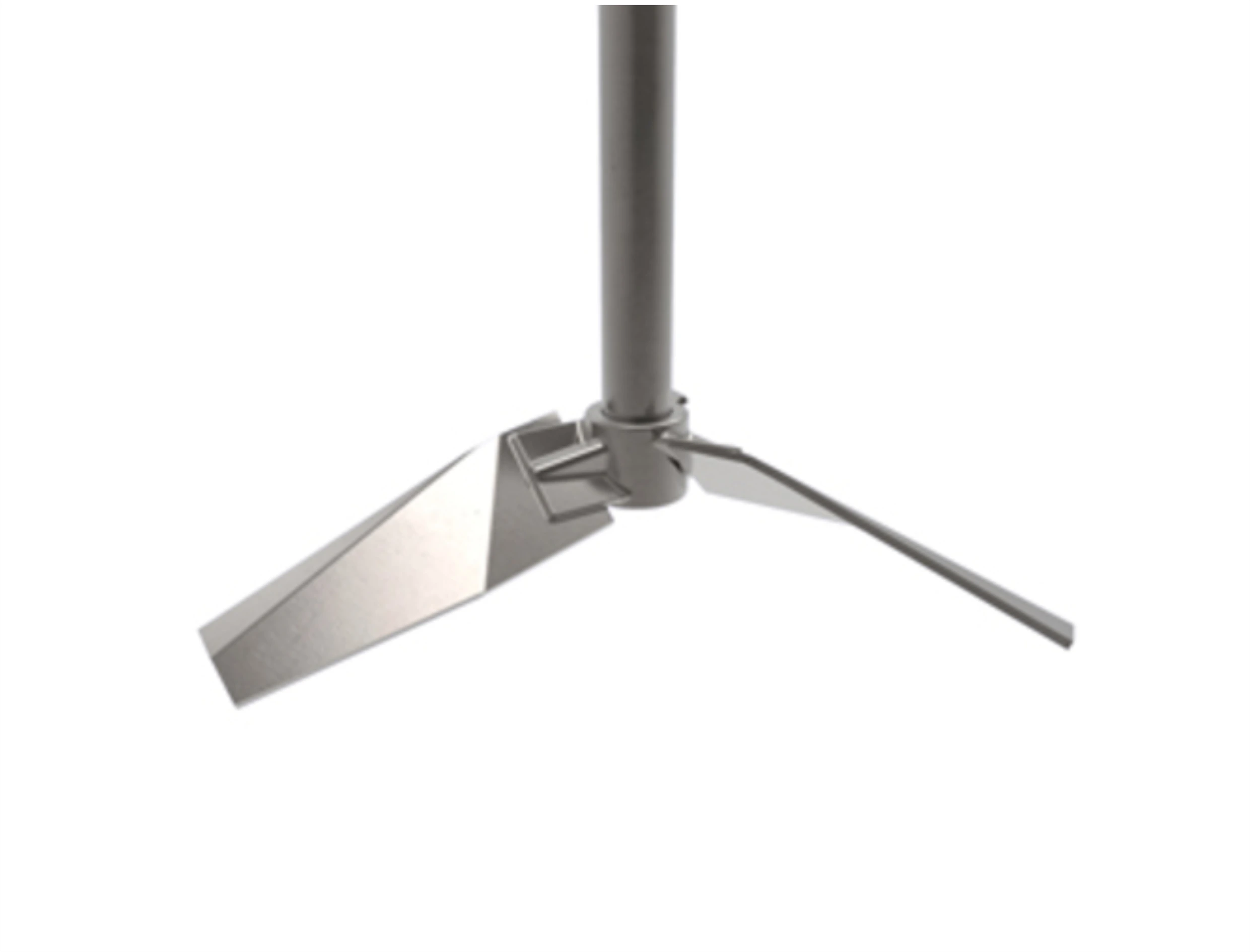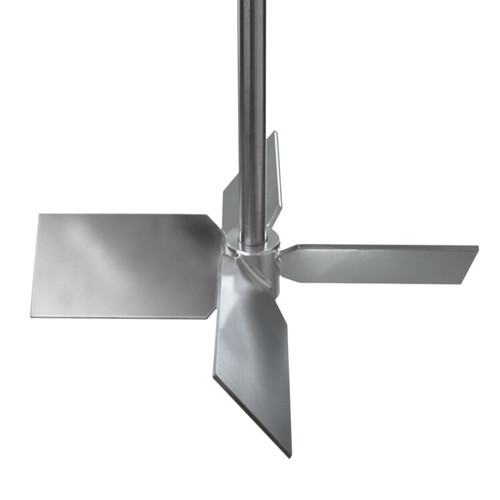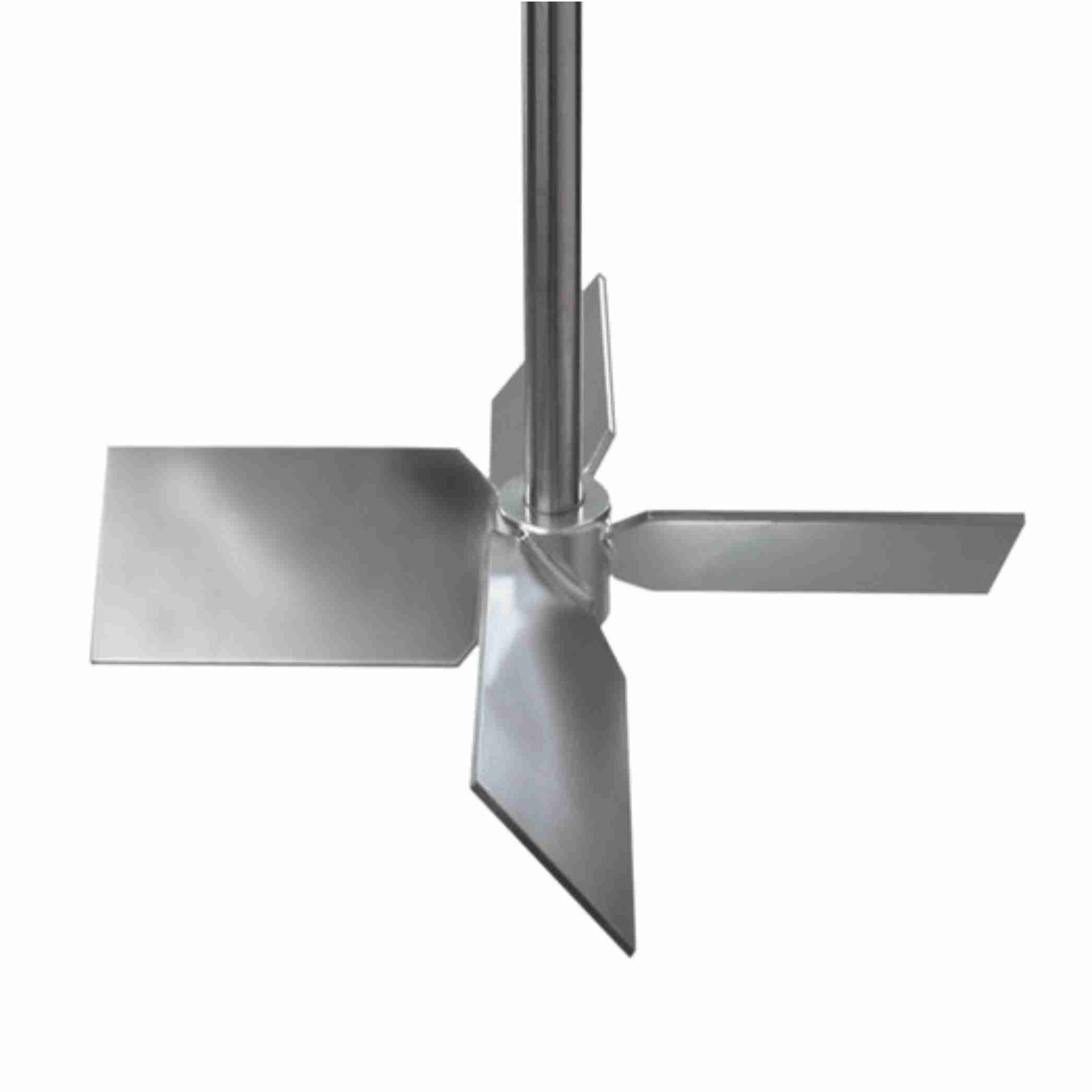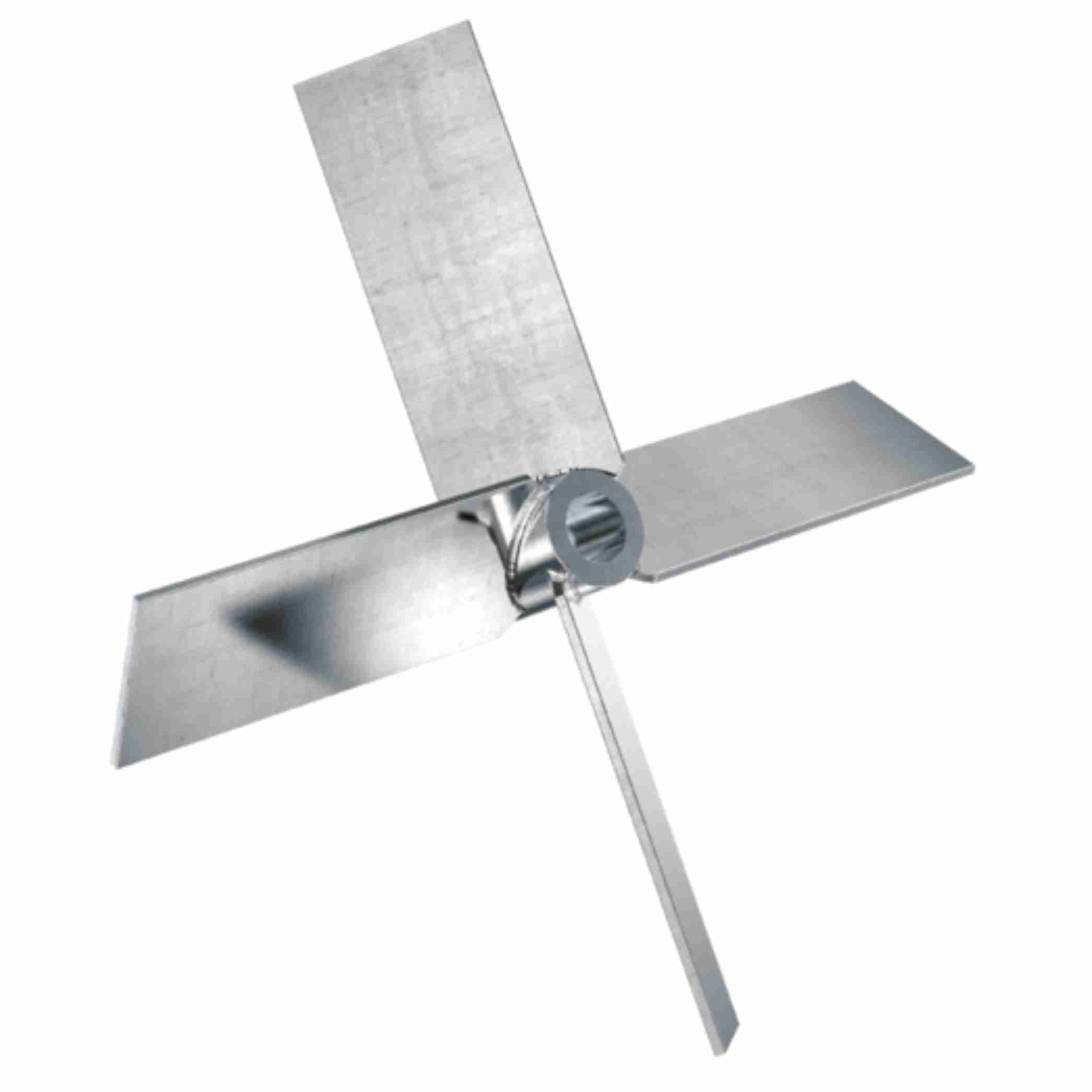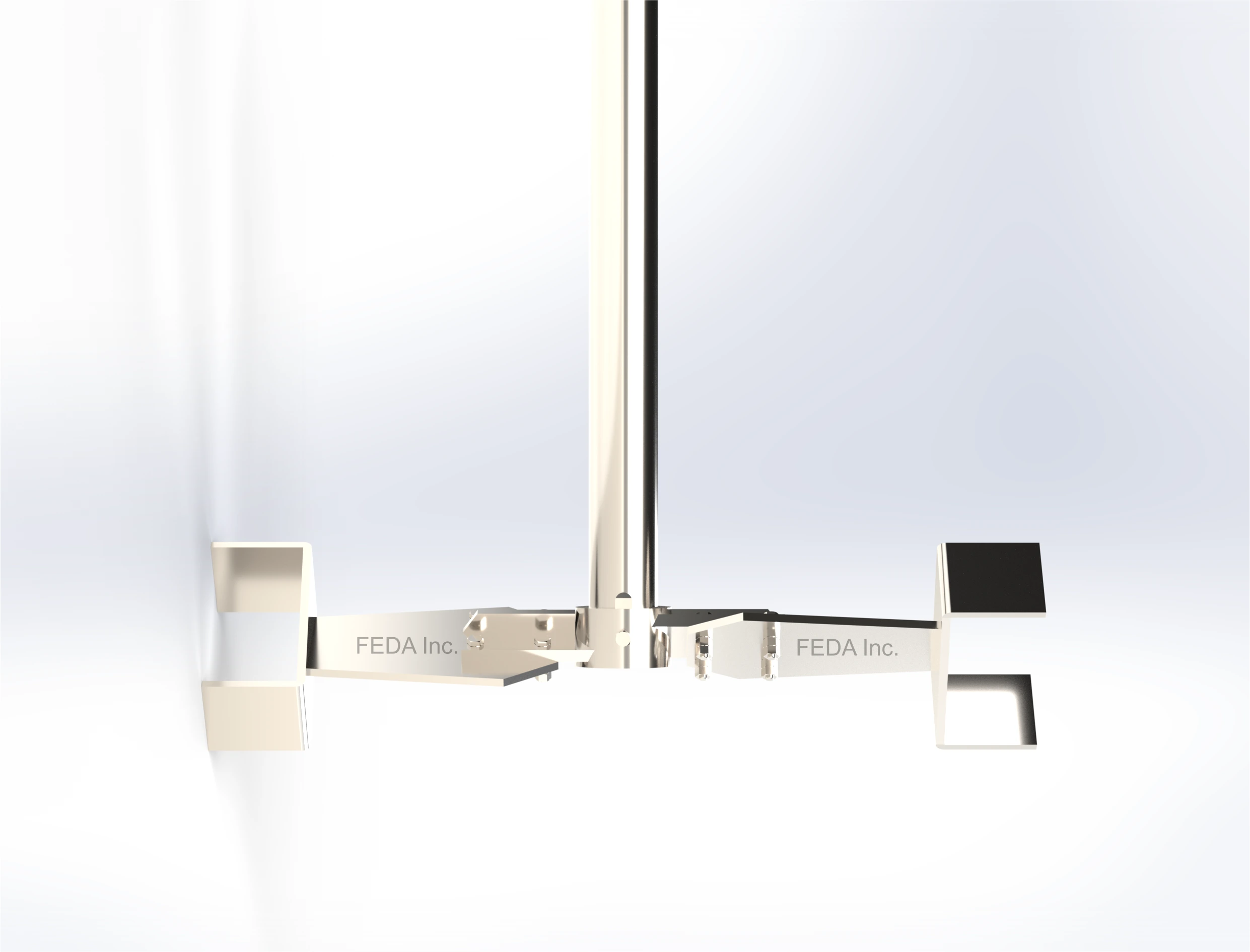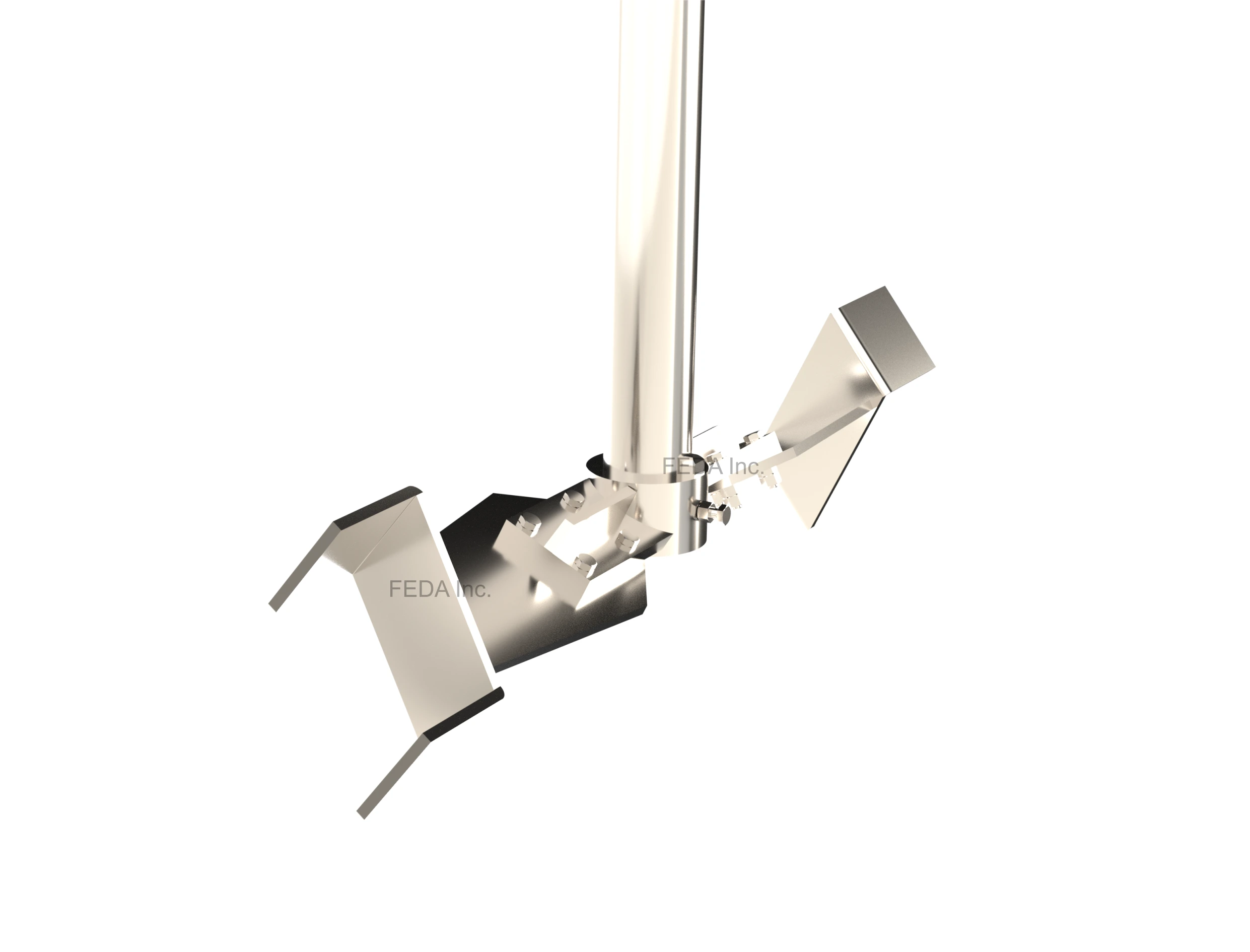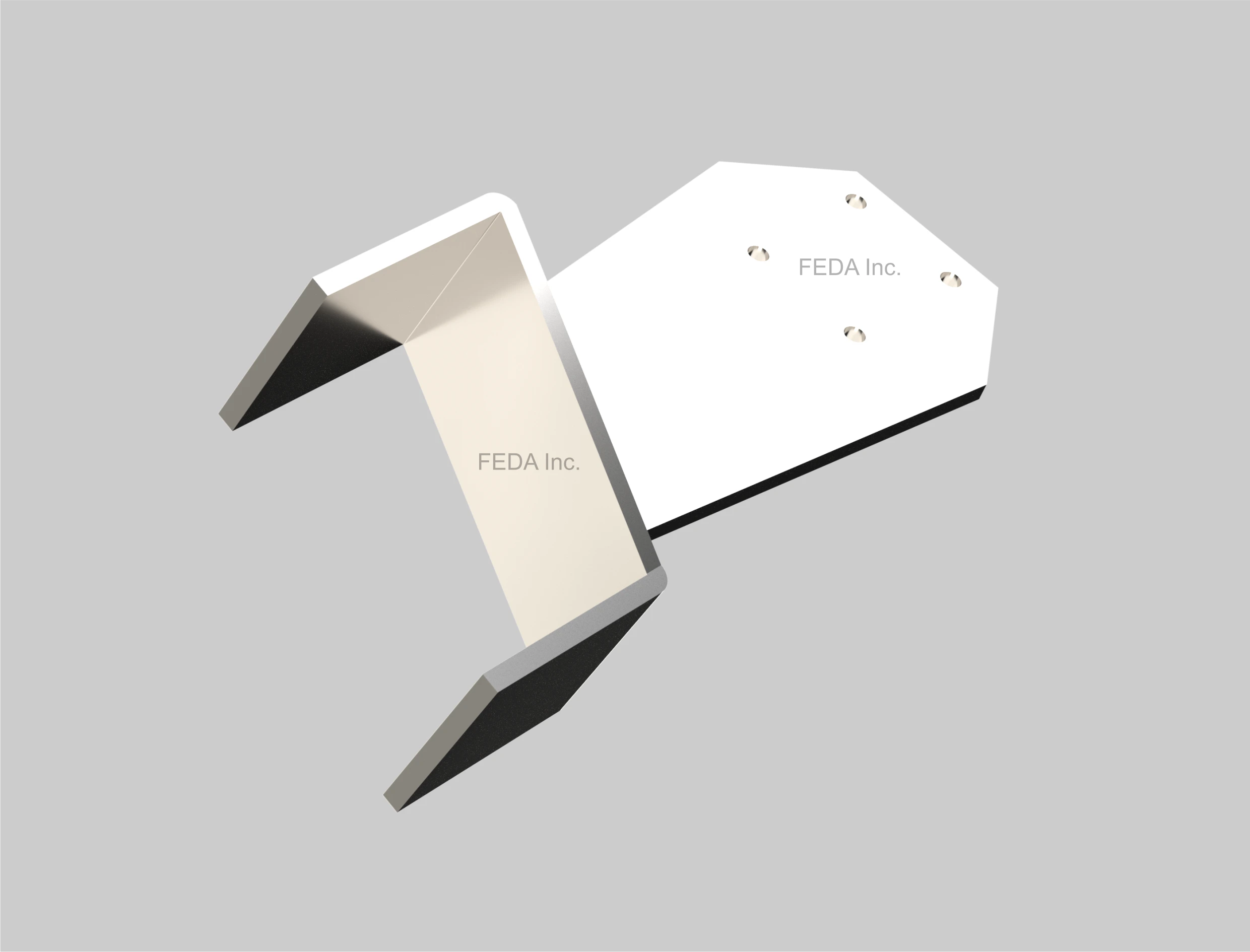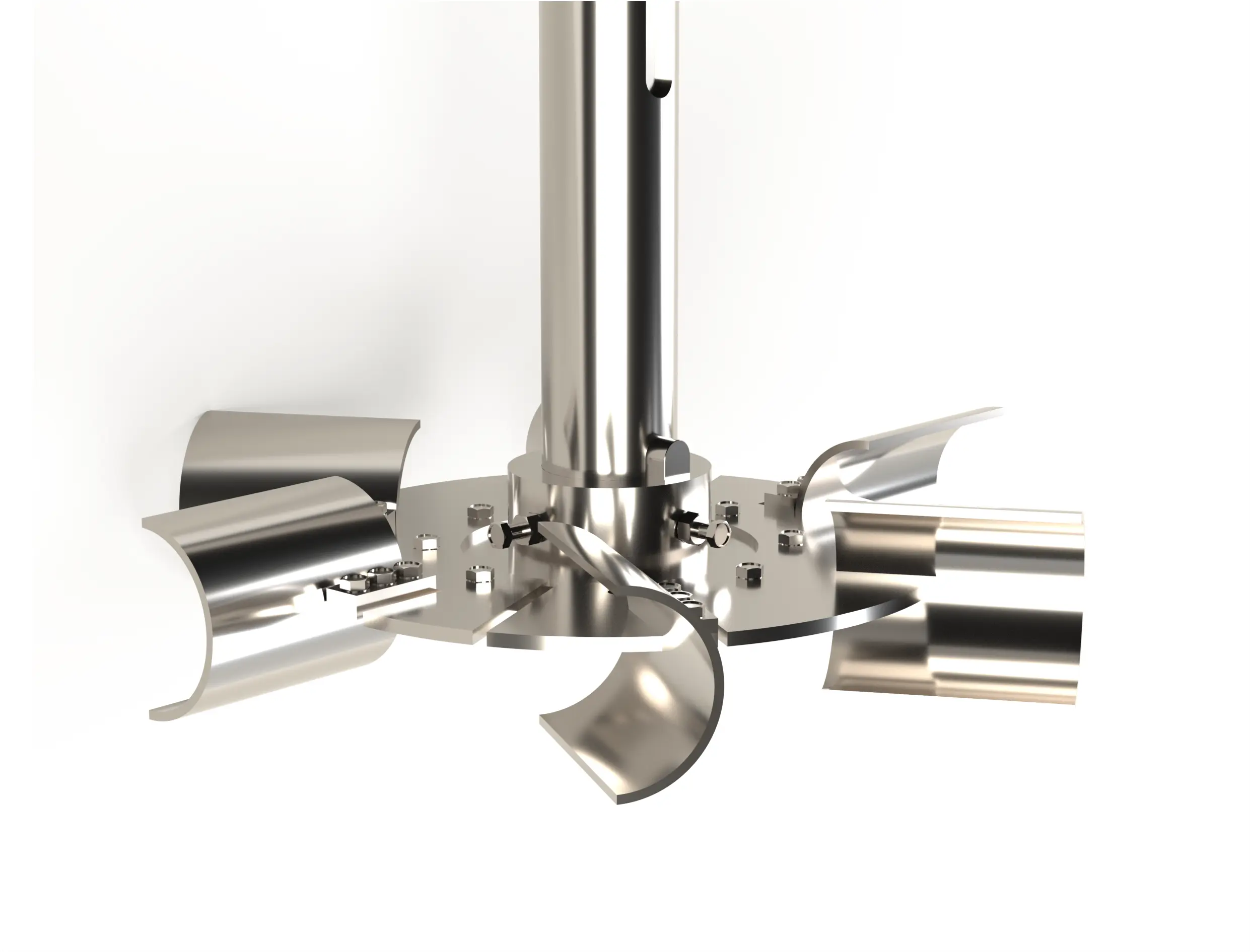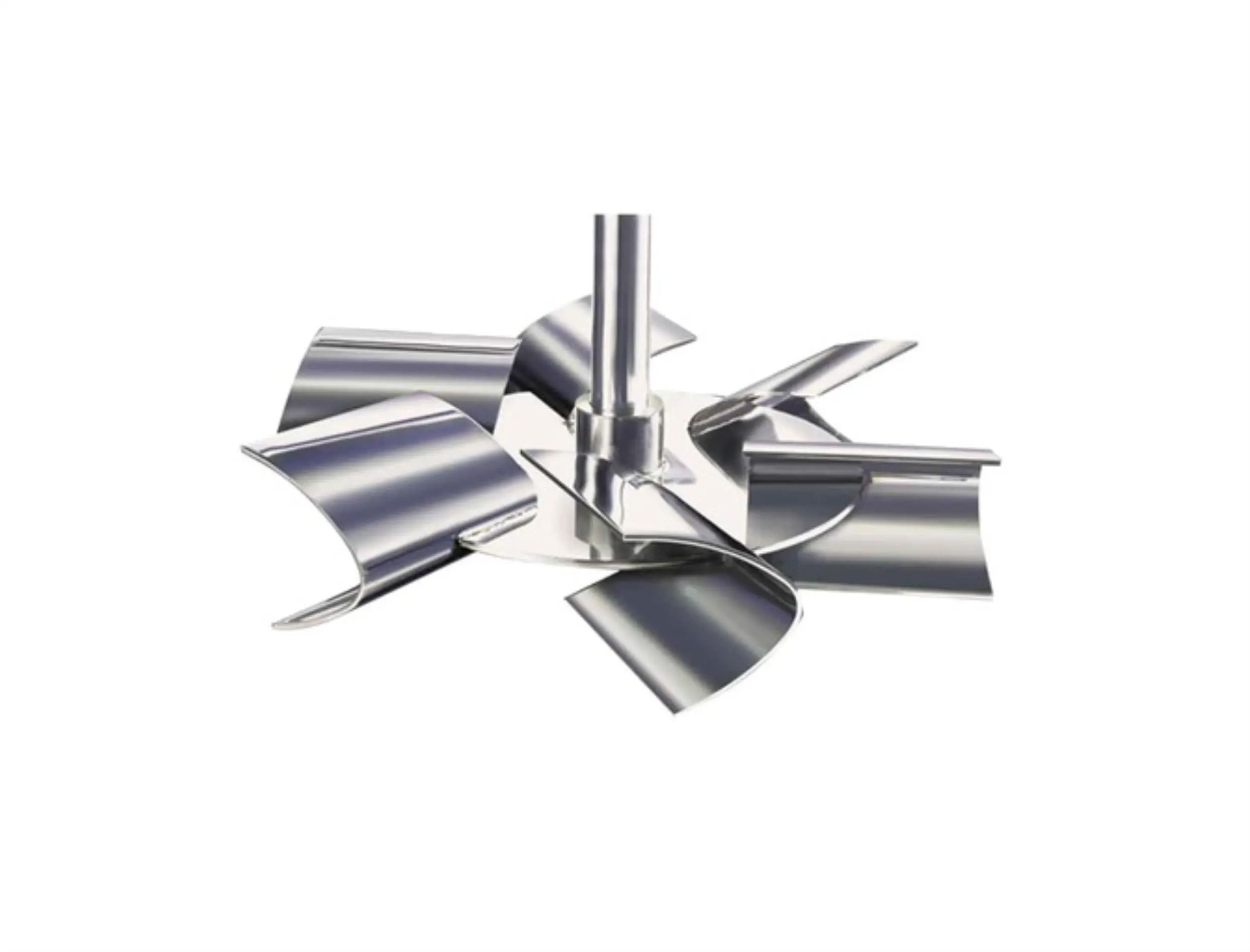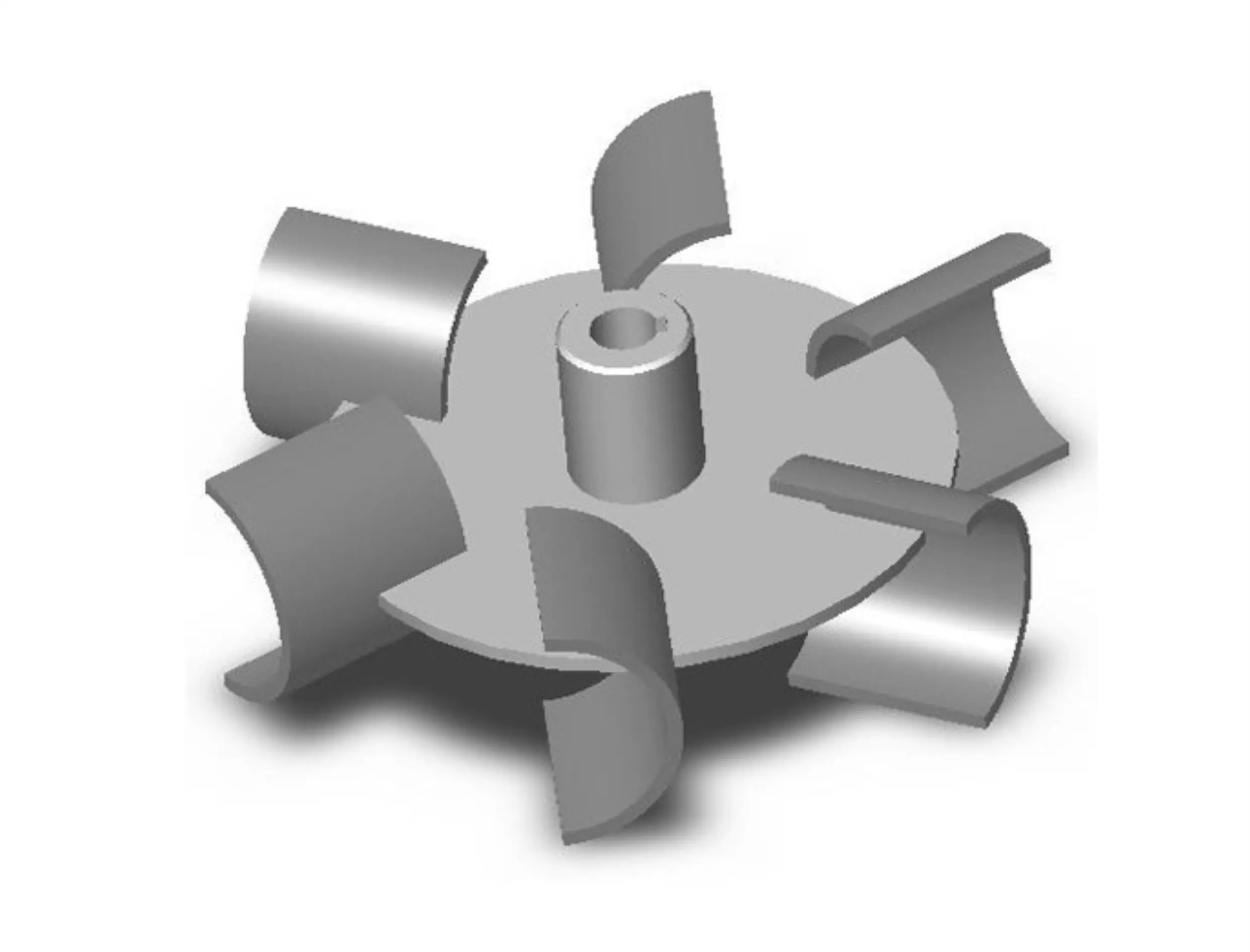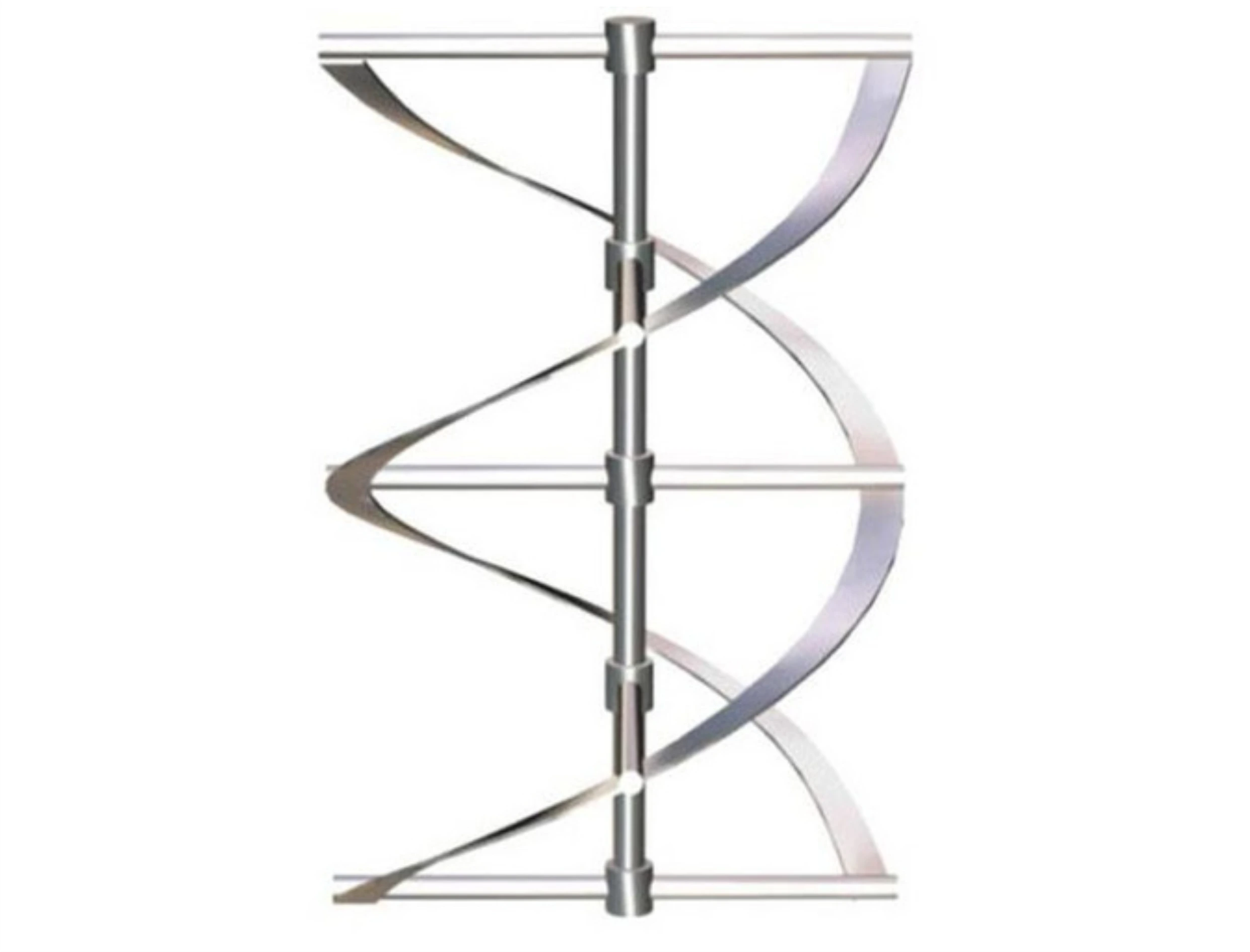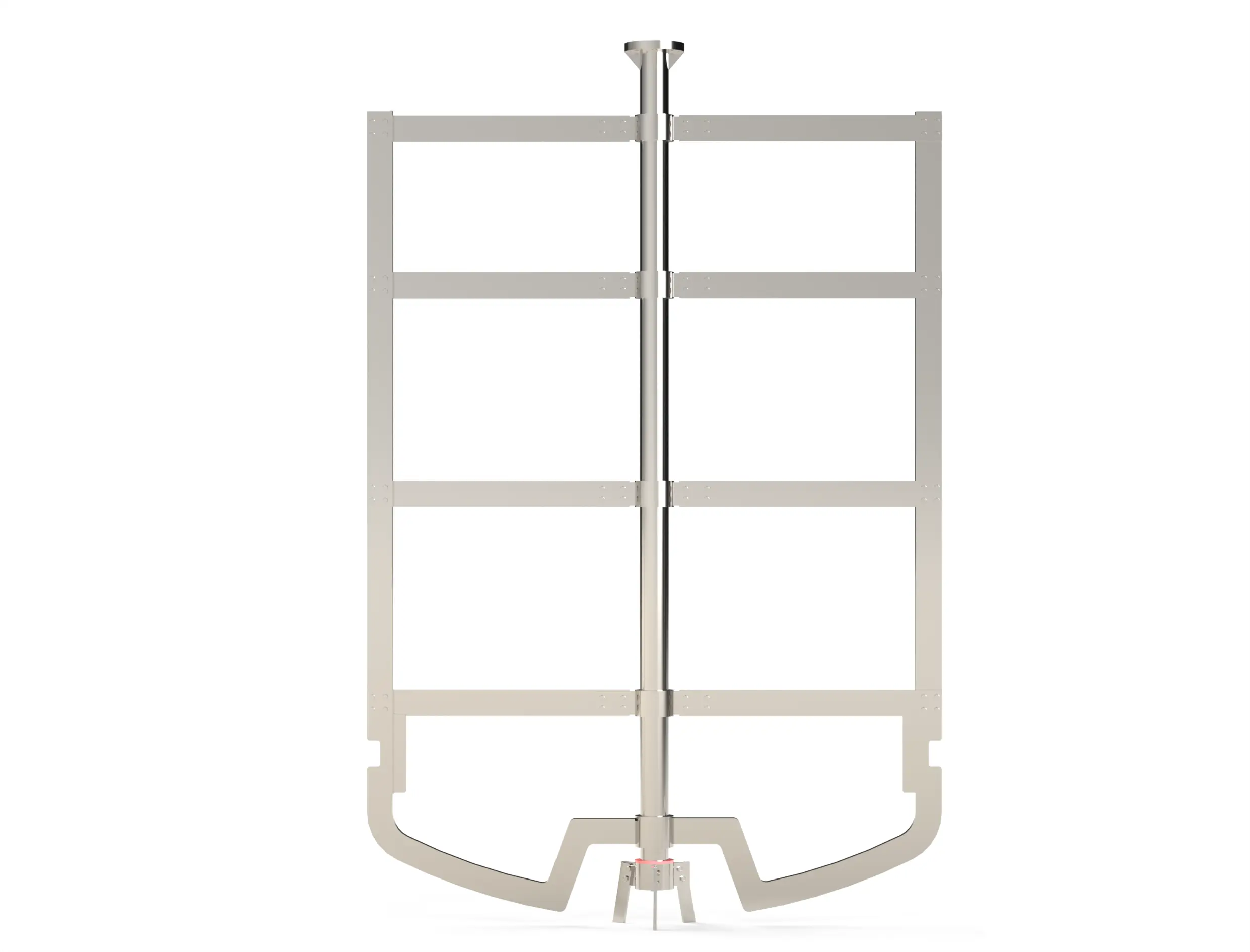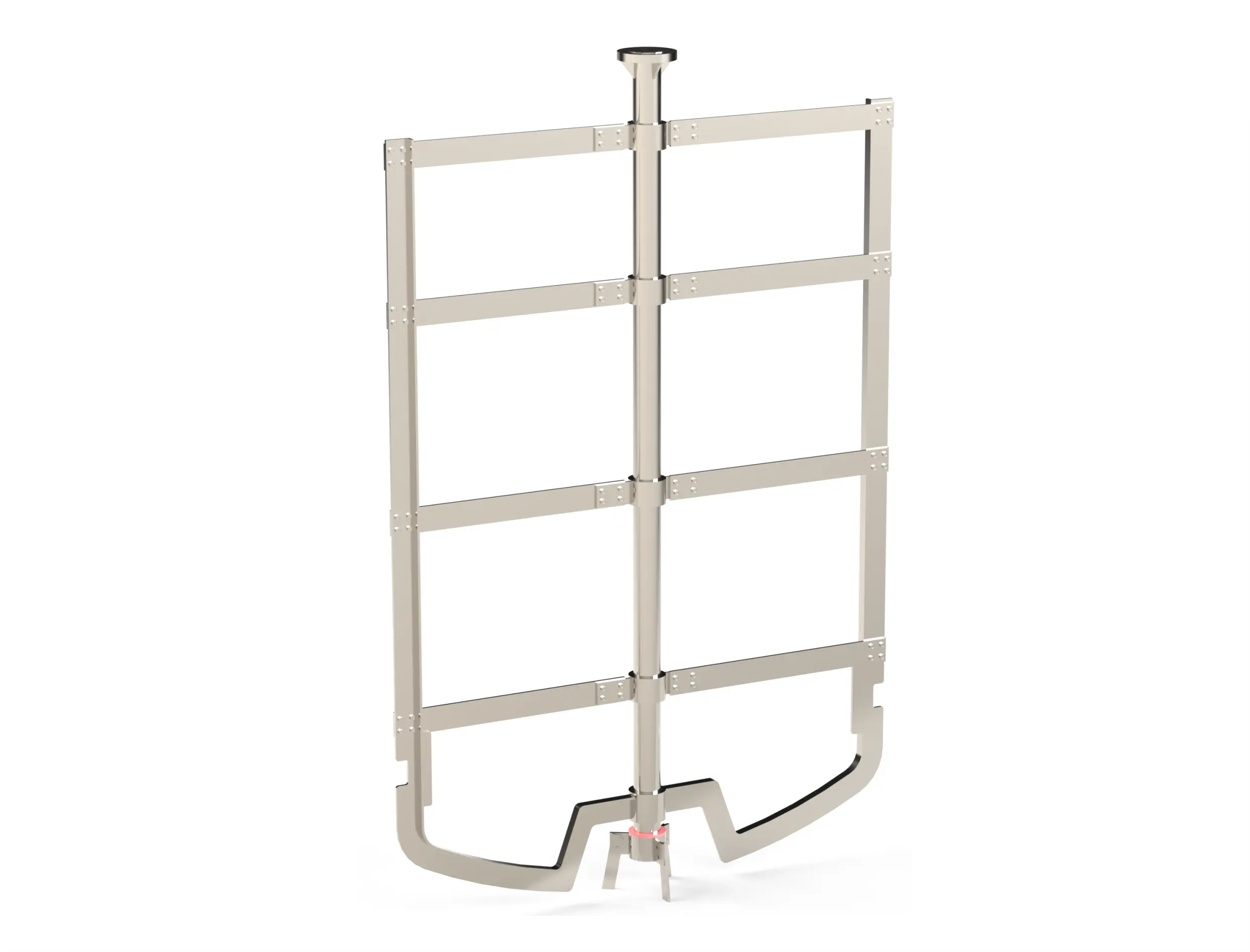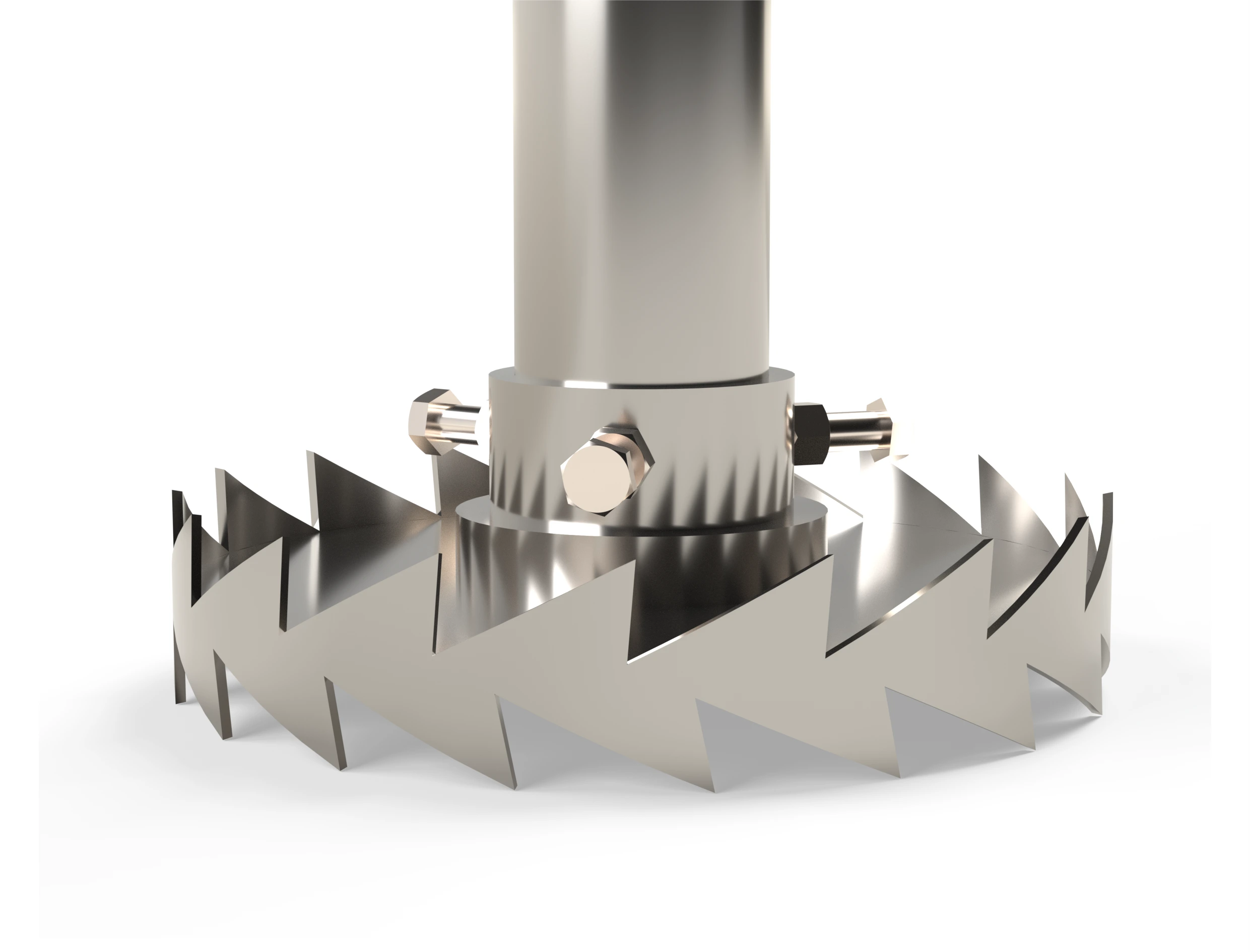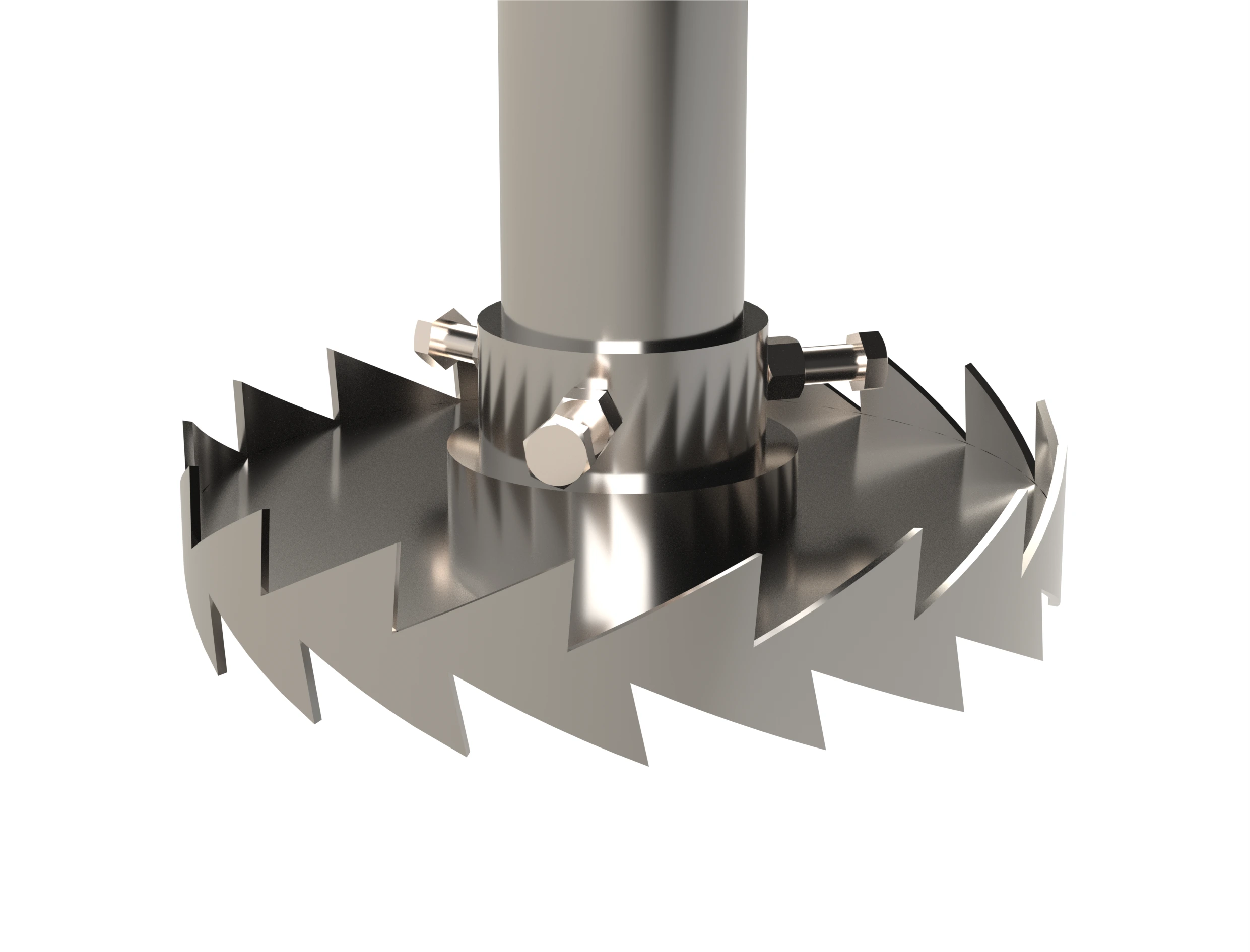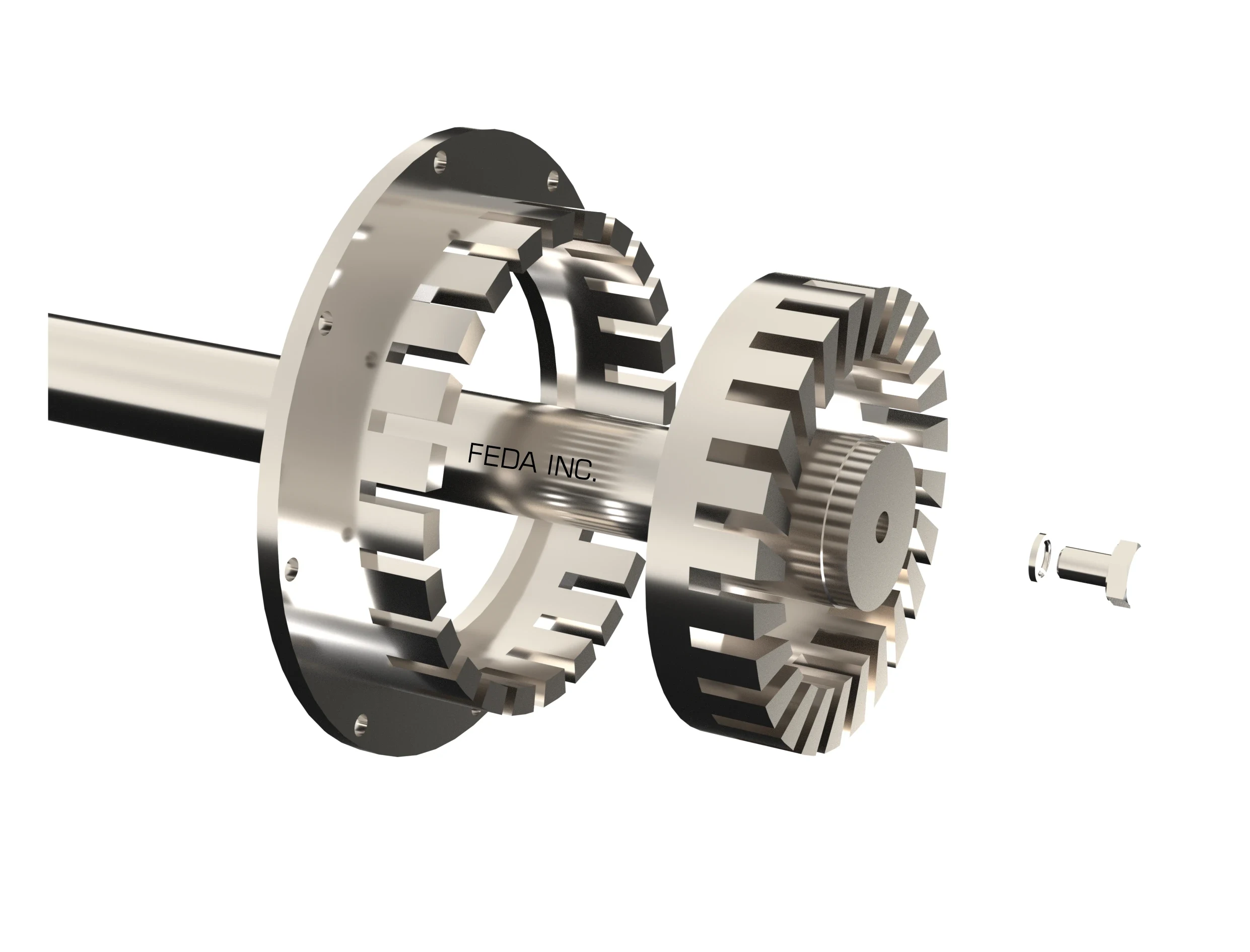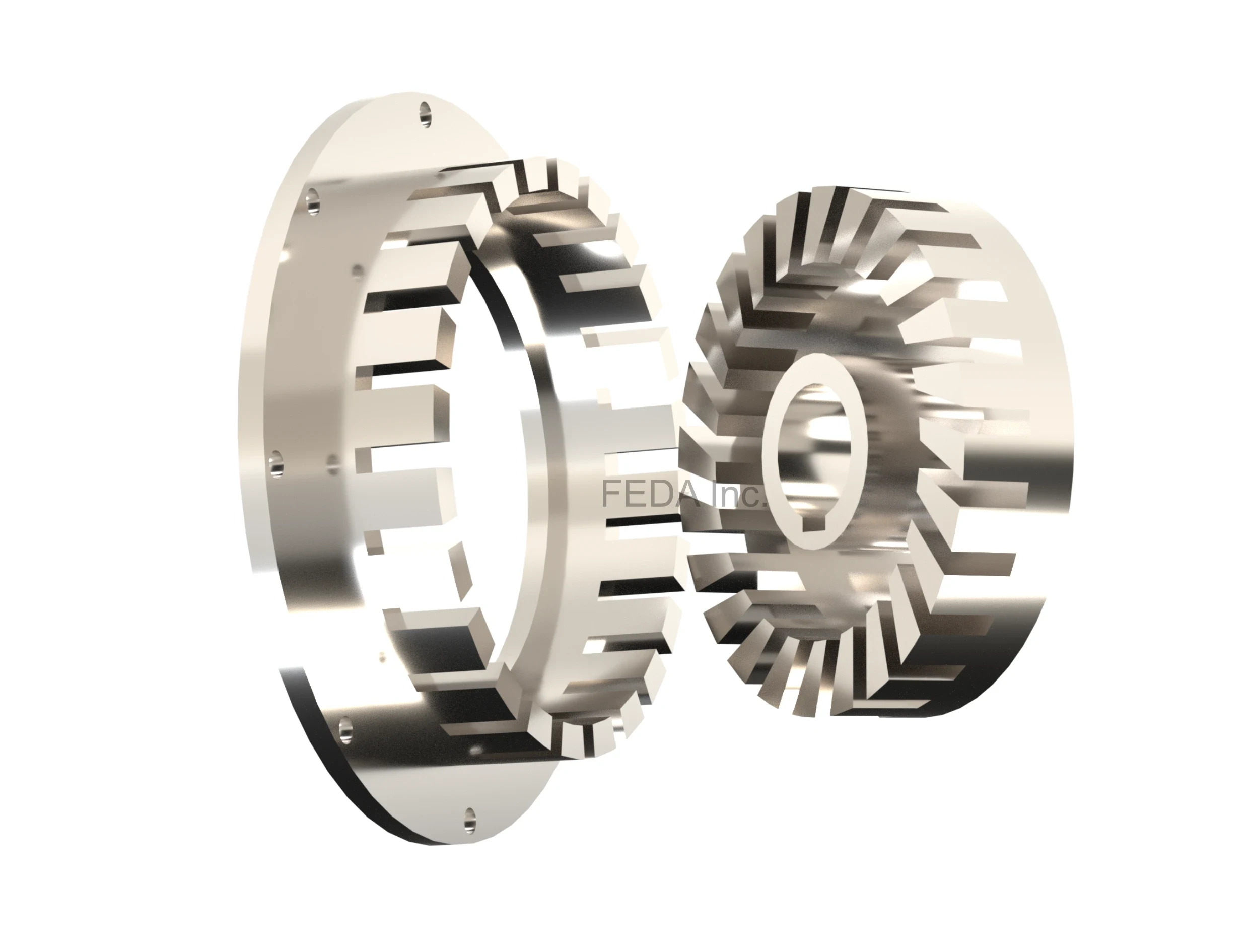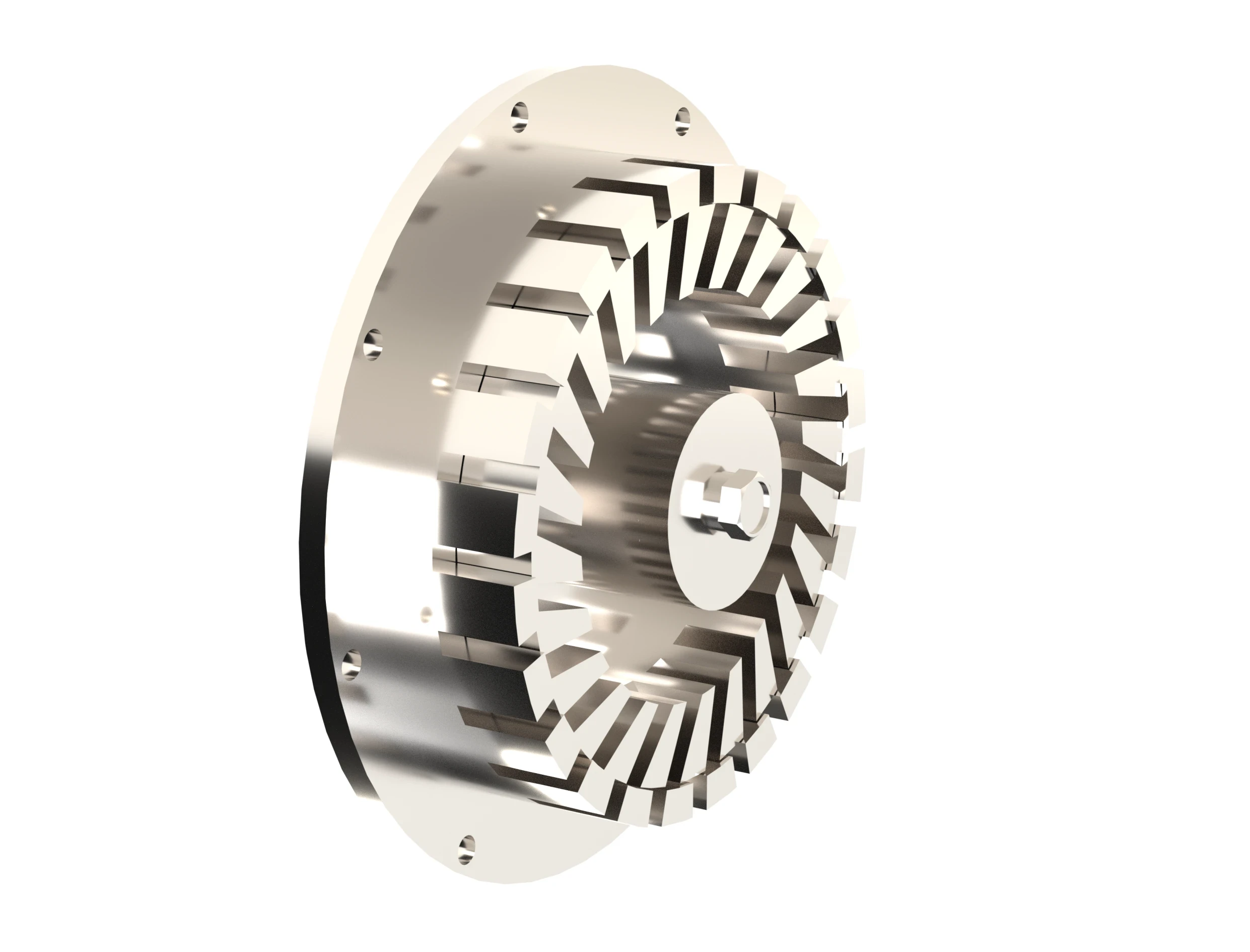Impeller technology
Hydrofoil Impeller
Hydrofoil impellers are specialized for low-energy mixing, designed with blades that have a curved, foil-like shape. This design minimizes drag and allows for efficient mixing with reduced energy consumption. Typically used in processes requiring gentle agitation, such as blending or suspension of solids in liquids, hydrofoil impellers are well-suited for applications in industries like food processing and pharmaceuticals. The low power requirement and high efficiency of these impellers make them ideal for large-volume mixing where gentle flow is essential.
Download Data-SheetPitched Blade turbines
Pitched Blade Turbines are axial-flow impellers that generate both axial and radial flow, making them effective in mixing applications involving immiscible liquids or solids. With their blades typically set at a 45-degree angle, they are designed to create suction near the liquid surface, aiding in the thorough mixing of substances. They are commonly used in processes where viscosity may change during the operation, such as in chemical reactors, wastewater treatment, and certain fermentation processes. Pitched Blade Turbines are adaptable to various configurations by altering the number of blades and their pitch angle.
Download Data-SheetCounter-flow Impeller
Counter-flow impellers are designed to create opposing flow patterns within the mixing vessel. The blades push fluid toward the walls of the vessel while simultaneously creating a bulk flow moving in the opposite direction at the center. This type of impeller is ideal for high-solid slurry applications and is especially effective when the impeller-to-tank diameter ratio is high. It is also suitable for applications involving both Newtonian and Non-Newtonian fluids. The opposing flow patterns ensure efficient mixing, making them a versatile choice for a wide range of industrial processes requiring low to medium shear rates.
Download Data-SheetCowl-Disk Impeller
Cowl-Disk Impellers are primarily designed for gas-liquid dispersion and gas absorption applications, such as in fermentation or oxidation processes. They feature a disk with a cowl or protective structure surrounding the impeller, which enhances the distribution of gas throughout the liquid. The cowl aids in minimizing the power consumption of the system by reducing vortex formation and ensuring a more uniform distribution of the gas phase. These impellers are ideal for processes involving high gas flow rates and are widely used in industries such as biotechnology, food processing, and chemical manufacturing.
Download Data-SheetHelical Ribbon Impeller
Helical Ribbon Impellers are specifically designed for mixing high-viscosity fluids. These impellers consist of one or two helical ribbons that rotate around a central shaft, creating an efficient axial flow. They are highly effective for maintaining homogeneity and facilitating heat transfer in thick or sticky materials. In some designs, inner augers are included to create counter-directional pumping, which enhances mixing efficiency. These impellers are commonly used in the food, pharmaceutical, and chemical industries, particularly when the final mixed product’s quality and consistency are critical.
Download Data-SheetAnchor/Gate Type Impeller
Anchor or Gate Type Impellers are used for high-viscosity mixing, particularly in applications with fluids that range from 5,000 to 50,000 centipoise (CP) in viscosity. These impellers have a special design that allows them to closely follow the vessel walls, providing effective scraping and agitation to ensure homogeneous mixing. By sweeping the walls and physically agitating the material, they prevent sedimentation and aid in heat transfer. They are typically used in processes like paste or gel mixing, adhesives, and coatings, where thick or viscous products are involved.
Download Data-SheetHigh-Speed Disperser Impeller
High-Speed Disperser Impellers are designed to provide intense shear and energy to a liquid system, ideal for tasks like liquid-liquid dispersion, powder dissolution, and de-agglomeration. These impellers are typically used in applications that require high shear forces to break down particles into finer sizes or to uniformly disperse solids into liquids. They are essential in industries where product quality depends on precise particle size and uniform distribution, such as in paint, coatings, and pharmaceutical manufacturing. The impeller’s ability to achieve fine dispersion and emulsions makes it a critical component for many high-shear operations.
Download Data-SheetStator Roter Impeller
Stator Rotor Impellers are used in applications requiring extreme shear, typically in particle size reduction to the micron or submicron level. These impellers feature a rotating rotor and a stationary stator, which creates intense shear forces that break down particles. They are often employed in processes like emulsions, dispersions, and homogenization, where the precise size and uniformity of particles are critical. Stator-Rotor systems are particularly useful in applications such as pharmaceuticals, biotechnology, and fine chemicals where micron-sized particles are required for the final product.
Download Data-Sheet
